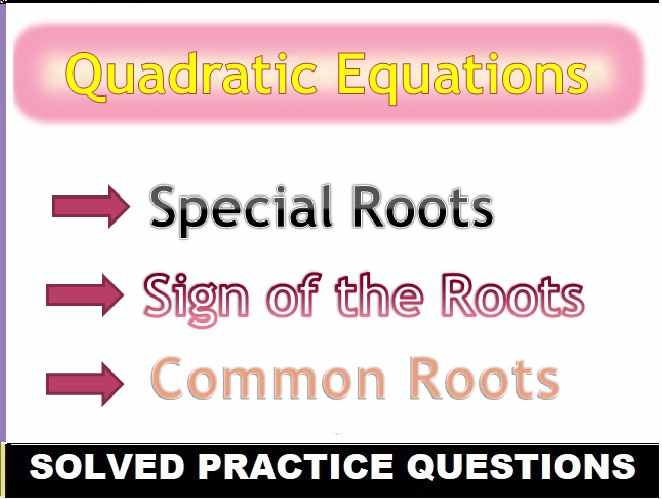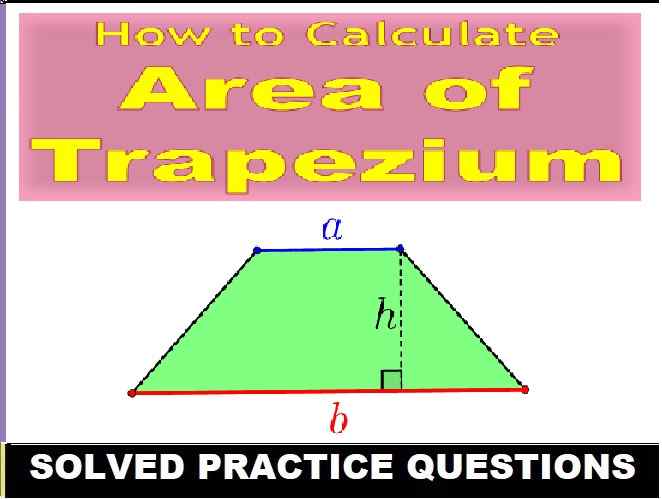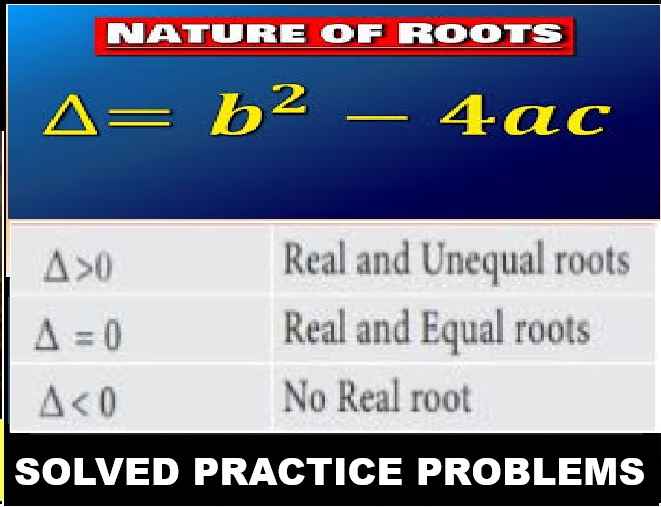Share and Dividend Class 10 ML Aggarwal Solutions for ICSE Maths Ch-3. Step by step solutions of Chapter 3 questions in simple and easy way to grasp the topics easily. Visit official Website CISCE for detail information about ICSE Board Class-10 Mathematics.

Share and Dividend Class 10 ML Aggarwal Solutions for ICSE Maths
| Board | ICSE |
| Class | 10 |
| Subject | Mathematics |
| Book | ML Aggarwal |
| Chapter-3 | Share and Dividend |
| Topics | Solution of Exe-3 Questions |
| Edition | 2024-2025 |
Share and Dividend
Class 10 ML Aggarwal Solutions for ICSE Maths Ch-3
Que-1: …. … …
Sol: FV of shares = Rs. 20
the value of 60 shares = Rs. 20 × 60
= Rs. 1200
rate of dividend = 9%
total dividend = Rs. 1200 × 9%
= 1200 × (9/100)
= Rs 108
Que-2: …. … …
Sol: rate of dividend = 8%
amount of dividend = Rs. 2840
nominal value of shares = (2840 × 100)/8
= Rs. 35500
Que-3: …. … …
Sol: FV of shares = Rs. 10
Number of shares = 200
Total face value of 200 shares = 10 × 200
= Rs. 2000
Now, the amount invested for the purchase of 200 shares at the rate of Rs. 12.50 each
= 12.50 × 200
= Rs. 2500
rate of dividend = 8%
total amount of dividend = (2000 × 8)/100
= Rs. 160
Que-4: …. … …
Sol: amount of dividend = Rs. 65
rate of dividend = 5%
total face value = (65 × 100)/5
= Rs. 1300
If the face value is Rs. 1300, then the market value = Rs. 140
If the face value is Rs. 100, then the market value = (1430 × 100)/ 1300
= Rs. 110
Que-5: …. … …
Sol: Given FV = Rs. 100
(i) Given MV = Rs. 132
And the number of shares = 50
So investment = number of shares × market value
= 50 × 132
= Rs. 6600
(ii) income per share = 7.5% of the face value
= (75/ 10 × 100) × 100
= Rs. 7.5
So annual income = 7.5 × 50
= Rs. 375
(iii) new annual income = 375 + 150 = Rs. 525
the number of shares = 525/7.5 = 70
number of extra shares to be increased = 70 – 50
= 20
Que-6: …. … …
Sol: total number of shares = 1800
FV of each share = Rs. 100
And rate of dividend = 15%
Total face value of 1800 shares = 100 × 1800
= Rs. 180000
Hence, total dividend = 180000 × 15/100
= Rs. 2700
Hence market value of one share = 100 + 40 = Rs. 140
Now the total investment = 140 × 1800
= Rs. 252000
Hence, the percentage of his return
= (27000 × 100)/ 252000
= 10.7%
Que-7: …. … …
Sol: NV of each share = Rs. 25
MV of each share = Rs. 36
Total income = Rs. 720
and Rate of dividend = 12%
Therefore total nominal value = (100 × 720)/ 12
= Rs. 6000
Number of shares = 6000/25
= 240
Hence Total investment = 240 × 36
= Rs. 8640 ( Ans of first part )
Now, percentage return = (720 × 100)/ 8640
= 8.3% ( Ans of second part )
Que-8: …. … …
Sol: investment = Rs. 26400
Face value of each share = Rs. 25
Rate of dividend = 12%
and Total dividend = Rs. 2475
Annual dividend = NV of a share × number of shares × r/100
(i) Therefore number of shares = (2475/12) × (100/25)
= 825 shares
(ii) Market value of each share = (26400/825)
= Rs. 32
Que-9: …. … …
Sol: Investment = ₹ 4500
Face value of each share = ₹ 100
Discount = 10%
and rate of dividend = 7.5%
The MV of each share = ₹ (100 – 25) = ₹ 75
(i) The number of shares he purchases = 4500/75 = 60
(ii) Dividend = ₹ 7.5% of (60 x 100)
= ₹ 450
Hence, his annual income will be ₹ 450.
Que-10: …. … …
Sol: investment = Rs. 36000
Face value = Rs. 100
Premium = Rs. 20
and dividend = 15%
(i) Number of shares = 36000/120
= 300
(ii) Dividend = 15% 0f (100 × 300)
= Rs. 4500
(iii) Percentage of return = (4500/36000) × 100
= 450/36
= 12.5%
Que-11: …. … …
Sol: (i) Market value of one share = [(200/100) × 100] + 100
= Rs. 120
Number of shares = investment/ market value of one share
= 29040/120
= Rs 242
(ii) Therefore, the income from investment = 242 × 15
= Rs 3630
(iii) Percentage return on his investment = (dividend/ market value) × 100
= (15/120) × 100
= 12.5%
Que-12: …. … …
Sol: FV of each share = Rs. 10
Rate of dividend = 8% per annum
and Total dividend = Rs. 300
Therefore total face value of shares = (300 × 100)/ 8
= Rs. 3750
Number of shares = 3750/10
= 375
Que-13: …. … …
Sol: investment = Rs. 8800
FV of each share = Rs. 100
MV of each share = 100 + 10 = Rs. 110
Total income = Rs. 1200
Hence total Nominal value = (8800 × 100)/ 110
= Rs. 8000
(i) Number of shares = 8000/100
= 80
(ii) Rate of dividend = (1200 × 100)/ 8000
= 15%
Que-14: …. … …
Sol: Total investment = Rs. 45000
FV of each share = Rs. 125
Hence total number of shares = 45000/125
= 360 shares
Income from sold shares = Rs. 8400
Therefore, the number of shares sold = income from shares/ number of shares sold
= 8400/ 140
= 60
(i) Number of shares he still holds = 300
(ii) Market value of 300 shares = 300 × 140
= Rs. 42000
Face value of 300 shares = 300 × 125
= Rs. 37500
Difference = Market value – face value
= 42000 – 37500
= Rs. 4500
Que-15: …. … …
Sol: number of shares = 560
Face value = Rs. 25
and Rate of dividend = 9%
Total face value of 560 shares = 25 × 560
= Rs. 14000
(i) Amount of dividend = 14000 × (9/100)
= Rs. 1260
(ii) MV of each share = Rs. 30
So Total investment = 30 × 560
= Rs. 16800
Hence percentage of interest on his investment
= (1200 × 100)/ 16800
= 7.5%
Que-16: …. … …
Sol: (i) number of shares = 10000
FV of each share = Rs. 100
and Rate of annual dividend = 8%
Total face value = 100 × 10000
= Rs. 1000000
Dividend = (1000000 × 8)/ 100
= Rs. 80000
(ii) Number of shares = 90
FV of each share = Rs. 150
FV of 90 shares = 100 × 90
= Rs. 9000
Hence amount of dividend = (9000 × 8)/ 100
= Rs 720
Market value of 90 shares = 90 × 159
= Rs 13500
Hence, the rate of interest = (720 × 100)/ (13500 × 1)
= 16/3
= 5.3 %
Que-17: …. … …
Sol: update soon
Que-18: …. … …
Sol: investment = Rs. 7500
Rate of dividend = 10%,
Total income = Rs. 500.
and Face value of each share = Rs. 100
Total face value = (100 x 500)/10
= Rs. 5000
If the face value is Rs. 5000, then investment = Rs. 7500
And if the face value is Rs. 100, then the market value of each share = (7500 x 100)/ 5000
= Rs 150
Que-19: …. … …
Sol: Total shares = 400
FV of each share = Rs. 10
The MV of each share
= Rs. 10 + Rs. 2.50
= Rs. 12.50
Rate of dividend = 8%
Hence, the face value of 400 shares = 10 x 400
= Rs. 4000
(i) Total investment = 12.50 x 400
= Rs. 5000
(ii) Total dividend = 4000 x (8/100)
= Rs. 320
(iii) Yield percent = (320 x 100)/ 5000
= 32/5
= 6.4%
Que-20: …. … …
Sol: In first case
Total investment = Rs. 10400
Rate of dividend = 6%
Market value of each share = Rs. 104
Total dividend = (10400 x 6)/ 104
= Rs. 600
in second case
investment = Rs. 11440
Rate of dividend = 10.4%
The market value of each share = Rs. 143
Therefore, total dividend = (11440 x 10.4)/ 143
= Rs. 832
Total dividend from both cases = Rs. 600 + Rs. 832
= Rs. 1432
Que-21: …. … …
Sol: Let the investment in each case = Rs. 116 x 145
Dividend in the first case,
= (116 x 145 x 7)/ 116
= Rs. 1015
Dividend in the second case
= (116 x 145 x 9)/ 145
= Rs. 1044
the second type of shares is more profitable
Que-22: …. … …
Sol: Let the investment in each case = Rs. 120 In the first case,
Dividend on Rs. 120 = Rs. 6
In the second case, a dividend on Rs. 10
= (8 x 10)/ 100
= 0.8
Now dividend on Rs. 15 = 0.8
Then dividend on Rs. 120 = (0.8 x 120)/ 15
= Rs. 6.4
Hence the second type of shares, is more profitable.
Que-23: …. … …
Sol: Investment = Rs. 10080
Face value of each share = Rs. 100
Market value of each share = Rs. 112
and Rate of dividend = 6%
Total income for the year
= (10080 x 6)/ 112
= Rs. 540
Number of shares = 10080/112
= 90
Selling price of 90 shares at the rate of Rs. 96 each = 90 x 96
= Rs. 8640
Rate of dividend in new shares = 10%
Face value of each share = Rs. 10
The market value of each share = Rs. 8
Number of shares = 8640/8 = 1080
Face value of 1080 shares = 1080 x 10
= Rs. 10800
Dividend = (10800 x 10)/100
= Rs. 1080
Difference in income = 1080 – 540
= Rs. 540 more
Que-24: …. … …
Sol: Investment = ₹ 8500
Face value of each share = ₹ 100
The market value of each share = ₹ 170
Rate of dividend = 10%
Total income for the year
= ₹ (8500 x 10)/170
= ₹ 500
And, the number of shares = 8500/170 = 50
Selling price of 50 shares at the rate of ₹ (170 + 30) each = ₹ 50 x 200
= ₹ 10000
(i) The sale proceeds = ₹ 10000
Rate of dividend in new shares = 12%
Face value of each share = Rs. 100
The market value of each share = Rs. 125
(ii) Number of shares = 10000/125 = 80
Face value of 80 shares = ₹ 80 x 100
= ₹ 8000
Dividend = ₹ (8000 x 12)/100
= ₹ 960
(iii) Hence, the change in his annual income = ₹ (960 – 500)
= ₹ 460 more
Que-25: …. … …
Sol: Investment = Rs. 4368
Market value of each share = Rs. 91
Face value of each share = Rs. 100
So, number of shares = 4368/91
= 48
FV of 24 shares = 24 x 100
= Rs. 2400
Sale price of shares worth Rs. 2400 = (2400 x 95)/ 100
= Rs. 2280
Face value of remaining shares = 24 x 100
= Rs. 2400
Sale price of shares of remaining amount = (2400 x 85)/ 100
= Rs. 2040
Total amount received = 2280 + 2040
= Rs. 4320
Loss = 4368 – 4320
= Rs. 48
Que-26: …. … …
Sol: market value = Rs. 80
Face value = Rs. 50
Interest on investment = 4%
Dividend on Rs. 80 = (80 x 4)/ 100
= 32/10
Percent dividend = (32/10) x (100/50)
= 64/10
= 6.4%
Number of shares = 200
Face value of 200 shares = 200 x 50
= Rs. 10000
Dividend = Rs. 10000 x (6.4/100)
= Rs. 640
Que-27: …. … …
Sol: Market value of each shares
= 100 – 20 = Rs.80
Interest on investment of Rs. 80 = 15% x 80
= 80 x 15/100
= Rs. 12
Dividend on the face value of Rs. 100 = Rs. 12
Rate of dividend = 12%.
Que-28: …. … …
Sol: Rate of dividend = 14%
Dividend on Rs. 50 = (14 x 50)/ 100
= Rs. 7
Now Rs. 10 is interest on the investment of = Rs. 100
Rs. 7 will be the interest on = (100 x 7)/ 10 = Rs. 70
Hence, the market value of Rs. 50 shares = Rs. 70
Que-29: …. … …
Sol: , No. of shares = 10000
Face value of each share = Rs. 100
Rate of dividend = 5%
(i) Total face value of 10000 shares
= Rs. 100 x 10000
= Rs. 1000000
Total amount of dividend = Rs. (1000000 × 5)/100
= Rs. 50000
(ii) Income of 72 shares = 72 × 5 = Rs. 360
(iii) Rate of interest on investment = 4%
Hence, market value of each share = Rs. 100/4 × 5
= Rs. 125
Que-30: …. … …
Sol: Face value of each share = Rs. 100
The market value of each share = Rs. 100 – Rs.25
= Rs. 75
Rate of dividend = 10%
Let the no. of shares be taken as x
Selling price = x × 75 = Rs. 75x
Face value of x shares = 100 x
Dividend annually = 100x × 10/100 = 10x
No. of shares purchased = 75x/80 = 15x/16
Face value of 15x/16 shares = 15x/16 × 100 = 1500x/16
Now, dividend = 1500x/16 × 16/100 = 15x
Thus, the increase in the income = 15x – 10x = 5x
5x = 2000
x = 2000/5 = 400
Hence, the number of shares purchased = 400
Que-31: …. … …
Sol: Let’s investment in first case = x
Then, the investment in second case = (6750 – x)
In first case, the dividend = Rs. x × (6/140)
= Rs. 3x/70
while dividend in second case = Rs. (6750 – x) × (5/125) = Rs. (6750 – x)/25
Total dividend = 3x/70 + (6750 – x)/25
But the total income given = Rs. 280
so equalize both
3x/70 + (6750 – x)/25 = 280
15x + 14(6750 – x) = 280 × 350 [Since, L.C.M = 350]
x = Rs. [(280 × 350) – (14 × 6750)]
= Rs. (98000 – 94500)
= Rs. 3500
Hence, investment in the first case = Rs. 3500
And investment in the second case = Rs. 6750 – Rs. 3500
= Rs. 3250
Que-32: …. … …
Sol: Total amount = Rs 20304
Let the amount invested in 9% Rs 50 at 8% premium = x
Then, the amount invested in 8% Rs 25 at 8% discount = 20304 – x
given that Income from both investments is equal
Now, income from the first type
= (x × 9)/(100 + 8)
= 9x/108
= x/12
Income from the second type
= [(20304 – x) × 8]/(100 – 8)
= [(20304 – x) × 8]/92
= 2(20304 – x)/23
both cases the annual income
So x/12 = 2(20304 – x)/23
23x = 24(20304 – x) [After cross multiplication]
23x = 24 × 20304 – 24x
23x + 24x = 24 × 20304
47x = 24 × 20304
x = (24 × 20304)/47
= 10368
Hence, the amount invested in first type = Rs. 10368
And amount in the second type
= Rs. 20304 – Rs. 10368
= Rs. 9936
— : End of Share and Dividend Class 10 ML Aggarwal Solutions for ICSE Maths Ch-3 questions :–
Return to :- ML Aggarwal Solutions for ICSE Class-10
Thanks
Please Share with Your Friends



Some things are off like in Q4 value should be1430 instead of 140 just like in Q6 total dividend =27000 instead of 2700 icsehelp.com/share-and-dividend-class-10-ml-aggarwal-solutions-for-icse-maths/